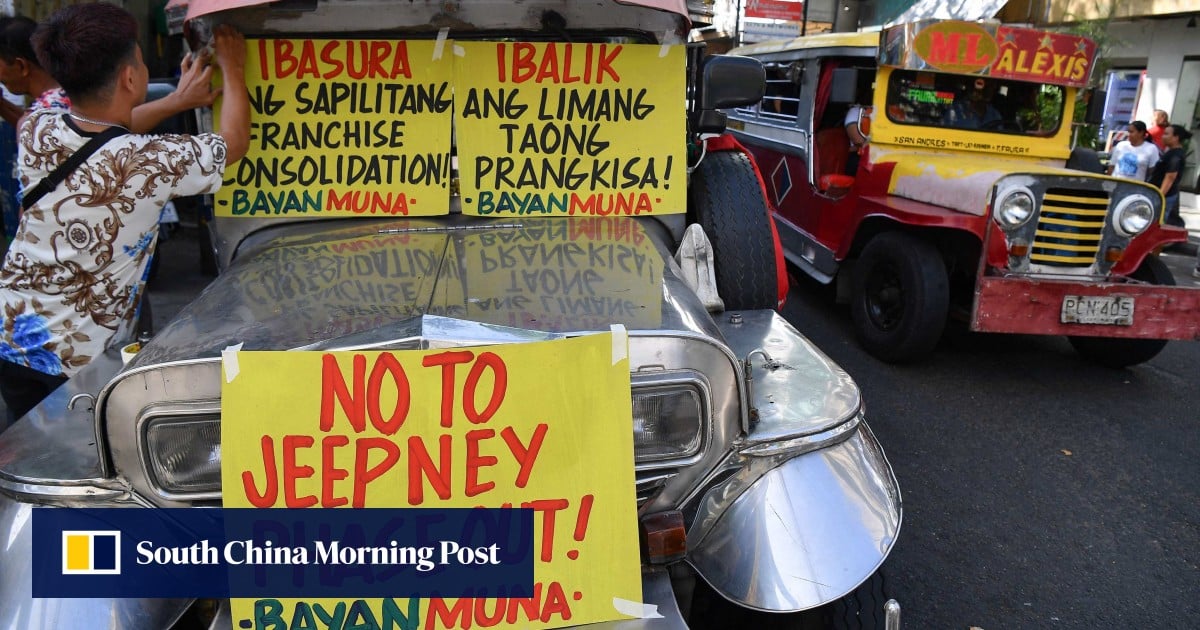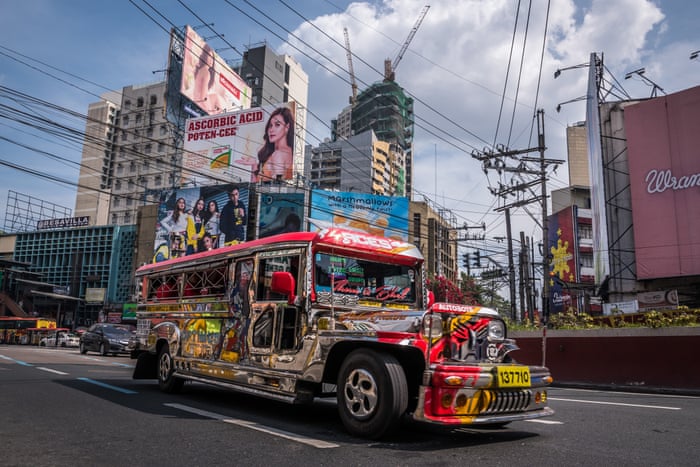Transit Advertising Philippines for Unmatched Brand Name Exposure
Transit Advertising Philippines for Unmatched Brand Name Exposure
Blog Article
Comprehending the Duty of Transit Advertising And Marketing in Enhancing Brand Exposure and Customer Engagement
Transportation advertising and marketing has arised as a pivotal aspect in the advertising and marketing landscape, supplying unique chances for brand names to boost their visibility and engage customers effectively. With the capability to get to a captive and diverse target market throughout their daily commutes, these marketing methods are not just about presence; they have to do with creating significant links with possible consumers. As we explore the multifaceted benefits and ingenious approaches within transit marketing, it comes to be essential to think about exactly how these aspects jointly affect customer perception and habits, increasing concerns regarding their long-lasting influence on brand loyalty.
Interpretation of Transportation Marketing
Transit advertising refers to the technique of advertising items, services, or brands with advertisements positioned around public transportation systems. This form of marketing incorporates a range of placements, including posters on trains and buses, electronic screens at transportation terminals, and wraps on the outside of automobiles. It aims to reach a varied audience, profiting from the high foot traffic related to public transportation.
Transit advertising and marketing is tactically positioned to record the interest of commuters, that commonly spend substantial time waiting or traveling. By incorporating advertisements right into the everyday regimens of individuals, brand names can produce a lasting impact and foster brand acknowledgment. The tool is particularly efficient in urban atmospheres, where public transportation is a key mode of traveling.
Additionally, transit marketing can facilitate local targeting, allowing services to get to particular demographics based upon transportation routes and terminal locations. As urban populaces expand and using public transportation increases, this marketing approach has gotten prestige as an important element of incorporated marketing methods. The vibrant nature of transit marketing, incorporated with its capacity to engage consumers in a restricted setting, underscores its importance in contemporary advertising and marketing practices.
Benefits of Transportation Advertising And Marketing
The effectiveness of transit marketing hinges on its ability to provide a plethora of benefits to brands looking for to enhance presence and engagement. One of the primary advantages is the substantial reach it offers; transit advertisements can efficiently target varied demographics throughout city locations, getting to both pedestrians and commuters alike. This wide direct exposure considerably increases brand understanding.
One more benefit is the high frequency of perceptions. As transit cars follow recognized paths and stop at multiple locations, they develop recurring direct exposure that enhances brand name messages. This frequency promotes experience, which is vital in consumer decision-making.
Transit advertising is also affordable compared to various other media systems. Provided its expansive reach and potential for high impacts, brand names commonly experience a reduced expense per thousand impacts (CPM), optimizing their advertising and marketing spending plan.
Moreover, transportation advertisements can produce a feeling of community link. By straightening with regional transit systems, brands can reverberate with regional audiences and cultivate a sense of local satisfaction. This localized strategy improves brand commitment and interaction, making transportation marketing a compelling selection for services aiming to strengthen their presence in the market.

Efficient Strategies for Transportation Campaigns
To make the most of the influence of transit campaigns, brand names should utilize calculated planning and implementation tailored to their target market. First, recognizing the market qualities of the audience making use of public transportation is vital. This permits brand names to produce customized messaging that reverberates with prospective consumers.
Next, selecting the right transportation tools is necessary. Whether utilizing bus covers, metro posters, or digital screens, each medium has special advantages that can improve visibility. For instance, lively visuals on bus covers can bring in interest, while electronic ads can be updated often to mirror timely promotions.
Additionally, incorporating a cohesive branding technique throughout transportation platforms guarantees consistency and reinforces the brand name's identity. Utilizing distinctive designs and memorable taglines will strengthen brand name recall among commuters.
Finally, timing is a crucial variable in performing effective transportation projects. Releasing projects during height traveling hours or neighborhood occasions can significantly enhance exposure and interaction. By utilizing these methods, brands can effectively harness the potential of transit advertising, fostering higher understanding and connection with their target audience. Ultimately, a well-executed transportation project can drive significant development in brand visibility and consumer involvement.

Measuring Influence and Involvement
In examining the efficiency of transit ad campaign, precise measurement of impact and involvement is necessary for brands looking for to maximize their advertising and marketing methods. Metrics such as reach, regularity, and perceptions offer foundational data to evaluate exposure. Examining these elements helps identify how many possible clients are exposed to the promotions throughout their daily commutes.
Interaction can be further gauged through over at this website consumer communications, such as site web traffic, social networks mentions, and straight responses to calls-to-action featured in the advertisements. Utilizing devices like QR codes or unique URLs can promote tracking of customer actions directly linked to transportation campaigns. Surveys and responses mechanisms my website likewise offer as valuable techniques to collect qualitative information on consumer understandings and recall of the promotion.
Moreover, advanced analytics and acknowledgment versions can correlate transit direct exposure with succeeding buying habits, supplying insights into the roi. By using an extensive technique that incorporates qualitative and quantitative steps, brands can establish a nuanced understanding of their transportation advertising and marketing impact. Ultimately, this data-driven method makes it possible for brands to fine-tune their projects, guaranteeing they reverberate properly with target audiences and enhance overall brand name exposure.
Situation Research Studies of Successful Campaigns
Successful transit marketing campaigns act as compelling examples of how effective strategies can elevate brand name presence and involvement. Transit Advertising Philippines. One remarkable instance is the "I Love New york city" campaign, which transformed the city's image and attracted millions of tourists. By making use of metro ads, billboards, and bus wraps, the project developed a solid, cohesive brand identification, causing a considerable uptick in tourism and local business patronage
An additional excellent project is Coca-Cola's "Share a Coke" initiative, which leveraged transit advertising and marketing to individualize the brand experience. By featuring preferred names on advertising products across my response numerous transportation platforms, Coca-Cola cultivated a much deeper emotional connection with customers, motivating them to share their experiences on social media.
In addition, the "Got Milk?" project efficiently utilized public transport ads to get to a wide audience, enhancing the message of the significance of milk in a balanced diet plan. The campaign saw a quantifiable boost in milk intake in target demographics.
These instance research studies illustrate that when executed attentively, transit marketing can considerably boost brand presence, foster consumer involvement, and drive measurable outcomes, demonstrating its crucial duty in contemporary advertising and marketing techniques. - Transit Advertising Philippines
Verdict
In verdict, transit advertising serves as a vital tool for enhancing brand visibility and fostering consumer engagement. Ultimately, the ability to measure engagement and analyze effective instance researches emphasizes the performance of transportation marketing in driving brand name loyalty and consumer interactions.
Transportation advertising and marketing has actually arised as a critical aspect in the marketing landscape, offering one-of-a-kind possibilities for brand names to raise their exposure and engage customers successfully.Furthermore, transit advertising can facilitate local targeting, enabling companies to reach details demographics based on transportation routes and terminal places.In assessing the effectiveness of transportation marketing campaigns, accurate dimension of effect and engagement is essential for brand names seeking to optimize their marketing approaches.Effective transit advertising and marketing projects serve as engaging instances of just how effective strategies can boost brand visibility and involvement.In conclusion, transportation marketing offers as a crucial device for boosting brand name visibility and cultivating consumer interaction.
Report this page